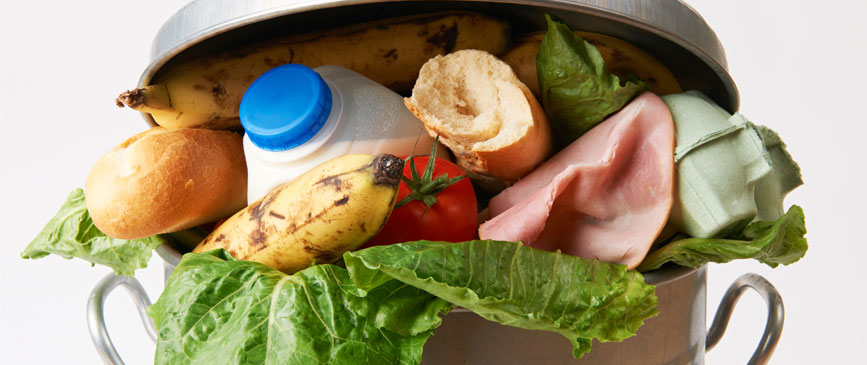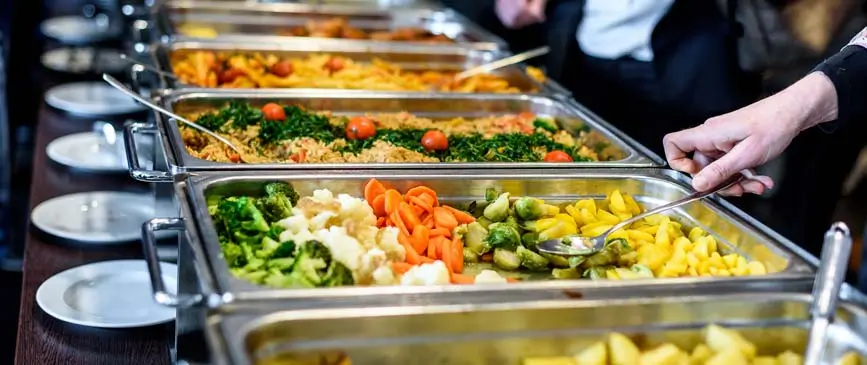With the National School Lunch Program (NSLP) maintaining momentum and an astounding 30million students participating on a daily basis, it shouldn’t come as a surprise that the a mountof food waste generated by K-12 students is estimated to have costs in the millions per year.
Food waste is a major challenge plaguing the environment and is yielding considerable costs for the food industry, (K-12 included). It goes unsaid that food waste has been taking a toll on the efficiency and productivity of the K-12 dining halls. For that reason, it is time that we share responsibility by taking initiative to lessen the food waste issue to help ensure a more sustainable future. We all realize that by conserving waste we won’t only be doing a huge favor to our planet but we will also be saving money and making our students responsible citizens of a global society.
The crucial issue of food waste has not popped up on the horizon, “out of the blue” but is a result of a unchecked situation over time with the result being, tons of food and general waste being dumped into trash cans and then landfills. How can we explore taking the lead by teaching our students a better way? The initiative to make things right and concrete steps in the right direction is an absolute necessity to bring about a substantial difference.
K-12 dining programs shoulder some responsibility of making sure that schools not only develop and formulate food waste reduction plans but also follows through for proper implementation of those plans. State-level policies might even help in doing so along with the buy-in of the students and their parents, who could voluntarily partner and play their part in cutting down on the amount of food waste that makes it way to landfills and trash cans.
Monitoring meal consumptions
One of the best ways to go about cutting down on unnecessary food waste is to keep a close eye on what’s trending on the menu and its consequent demand. K-12 leaders who are responsible for the holistic management of the school meal could benefit from working to make sure the menu primarily has items student customers want to eat. Monitoring is crucial as it gives a fair idea of the quantity of ingredients and product offerings that need to be procured so that waste is minimized. Also quality should be equally considered (if not above anything else), as a fresh nutritious and appealing meal is more likely to be sold out then low quality food.
Previous sale numbers can be used as a parameter to make future buying decisions and hence should be closely monitored to make well-informed decisions. This process can be made more effective by holding taste tests and encouraging student feedback thus gaining a fair picture of acceptance rates and consumer satisfaction.
Getting the students involved
Just as student buy-in is taken into consideration and suggested when deciding on menu offerings and keeping them engaged, similarly instilling a sense of social responsibility amongst the students can help in effectively managing food waste in the café. Channeling the energy and enthusiasm of students towards something productive is key.
Solicit the help of teachers to make the whole experience informational and value-adding by enlightening the students about the importance of managing waste and its harmful effects on the environment. This way students themselves act responsibly when selecting their food for breakfast and/or lunch. K-12 dining service programs can further partner with teachers and parents to introduce a system that is well-aligned on different levels.
Managing waste in K-12 dining halls can be accomplished collectively, if students and parents volunteer to be a part of the process. Student clubs are very effective in this regard as they are typically already accustomed to helping generate prevention ideas to keep food waste at a minimum. Involving janitorial staff in developing an initiative to properly dispose of leftover food is essential. In addition a recycling and waste management team (preferably led by a strong, capable) student leader, a teacher, custodian and an administrator should be setup to get the ball rolling and making everyone realize their respective roles in reducing waste in school dining rooms.
Reduce, Recover and Recycle
K-12 dining service programs are encouraged by The U.S. Food Waste Challenge to religiously follow a 3-step process (Reduce, Recover, Recycle) comprising of sub-processes to manage and recycle food waste. Waste is inevitable and can happen anywhere along the school food service flow process, which can be categorized as:
- Planning – K-12 Child Nutrition Programs need to carry out an audit of their cafeteria policies and order efficiently. Polls from students and staff should be considered so that further steps are streamlined.
- Purchasing – K-12 Child Nutrition Programs are all about forecasting and using prior information to eliminate the guess work prior to ordering. Food Buying Guides and perpetual inventories is one effective way. Purchasing as per demand, in a cost-effective manner, with shorter intervals all goes a long way in closely managing food waste in school cafeterias.
- Receiving – Perishable foods and those with low expiry dates should be managed accordingly on the receiving end and food should be properly inspected for quality and quantity.
- Storing – Food waste cannot be effectively managed overnight. A proper well-planned system needs to be implemented and inventories need to be properly managed to avoid food loss due to early expiration dates. Temperature regulations and proper handling also plays an important role in storage.
- Producing – K-12 dining programs should be concerned with maximizing resources. Live vegetable inspired cooking stations that prepare stir fries and omelets right in front of your eyes is actually possible for most schools since breakfast participation is typically low. These live stations would be is a treat to have, addressing hygiene standards at the same time. As often as possible, vegetables can be sautéed instead of being pre-boiled and most sauces, freshly prepared. Experimenting with seasoning options and cutting and slicing in different forms can be enticing for the student customers.
- Serving – K-12 dining programs are always up to serve excellence in every way! With all the previous efforts likely to yield positive results (when implemented properly) it is important that consumption is encouraged and waste is reduced to a bare minimum.
Though typically a challenge for most programs, affording longer meal periods for lunch gives the student customer ample time to eat in peace and not throw away an unpeeled banana or an opened milk carton. Research has proved that giving a minimum of 30 minutes for lunch,drastically reduces food wastage.
The option of “share tables” allows students to exchange food items that they might not be interested in eating for something they prefer (from fellow students).
Having quality controls at both ends of the continuum and ensuring a strict system of check and balances both in “front of the house” and “back of the house” is important in strategizing ways to reduce food waste. Even taking up some of these solutions and effectively implementing them in K-12 dining halls will eventually eradicate the problem of food waste management and transform the way K-12 food service programs operate. This is a win-win for everyone,including our planet.
More information about The U.S. Food Waste Challenge can be found here: http://www.ncsl.org/documents/statefed/SarahEckhouseUSDA.pdf



